Bringing Back Bighorn Sheep
 It’s early morning in Yellowstone country, and domestic sheep paint an idyllic scene as they dot the countryside along the mighty river. High on a bluff overlooking the valley, a Bighorn ram is making his way toward the lush grassland the domestic sheep are grazing; this is not the first time he’s been to this ranch. This ram does not cut the figure of majesty and strength that Bighorn Sheep have come to represent across the Western states — coughing and sneezing, he is dying from pneumonia. This disease, often carried by domestic sheep and easily contracted by Bighorns, has killed thousands of the wild sheep in recent decades, depleting some states’ herd populations to less than 30% of their numbers in the 1980s. In Montana alone, over 1,500 sheep have died in recent years, leaving fewer than 5,000 sheep scattered throughout the state.
It’s early morning in Yellowstone country, and domestic sheep paint an idyllic scene as they dot the countryside along the mighty river. High on a bluff overlooking the valley, a Bighorn ram is making his way toward the lush grassland the domestic sheep are grazing; this is not the first time he’s been to this ranch. This ram does not cut the figure of majesty and strength that Bighorn Sheep have come to represent across the Western states — coughing and sneezing, he is dying from pneumonia. This disease, often carried by domestic sheep and easily contracted by Bighorns, has killed thousands of the wild sheep in recent decades, depleting some states’ herd populations to less than 30% of their numbers in the 1980s. In Montana alone, over 1,500 sheep have died in recent years, leaving fewer than 5,000 sheep scattered throughout the state.

Efforts to restore these iconic animals are far-reaching and multi-faceted. Any intervention becomes a balancing act as the wellbeing of the Bighorn is weighed against the fact that domestic grazing is one of the National Forest Services’ many uses, in consideration of the rights of landowners and woolgrowers, and the ever-looming question of funding.
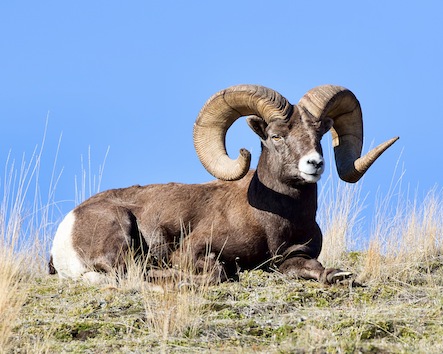
The Bighorn Sheep Disease Research Consortium — a research group currently studying sheep populations in Hells Canyon, has radio collars on over 500 sheep; their study area covers parts of Washington, Oregon, and Wyoming, and Idaho. The Consortium, founded in 2009, has made great strides in further understanding how pneumonia moves through time and space to affect Bighorn. Research has shown that while domestic sheep may initially cause an infection, the Bighorn sheep themselves perpetuate the disease within populations and cause devastating die-offs. Recent breakthroughs have been made in finding a pathogen common to Bighorn sheep with pneumonia; microbiologists at Washington State University are working on a potential vaccine. Locally, Montana State University has teamed up with Fish Wildlife and Parks on a 1.2 million dollar, six-year project to provide information to further Bighorn conservation causes.

One of the biggest obstacles to increasing Bighorn sheep population is the convolution of politics surrounding domestic sheep grazing on ranges where Bighorn have historically existed or been recently transplanted, including public lands such as national forests. There has been an ongoing conflict between conservationists who say that the solution is to remove domestic sheep flocks from public lands and national forests near Bighorn habitat, and woolgrowers who are reluctant to give up grazing rights on land where they have been running livestock for years. This conflict has led to situations in places such as Hells Canyon in Idaho, where hundreds of Bighorn have died in the Payette National Forest from pneumonia thought to be contracted from domestic sheep. The saga continues. In 2012, conservation organizations won a court battle regarding the closure of large parts of the Nez Perce National Forest to domestic sheep grazing. In California, 400,000 acres of Bighorn range were banned to domestic sheep and allocated as critical to Bighorn survival.

Locally, the struggle for survival looks a little different, and perhaps more promising for the Bighorn, because Fish Wildlife and Parks, the National Forest Service, conservation groups, and woolgrowers all work together to come up with solutions and mitigations. Tom Carlsen, currently on the Board of Directors with the Montana chapter of The Wild Sheep Foundation, is recently retired from FWP and was the editor and lead writer of their comprehensive document “Montana Bighorn Sheep Conservation Strategy”, which describes the history and management of Bighorn in Montana. An expert in the field, Carlsen emphasizes the importance of the cooperative efforts here in Montana. FWP has maintained connections with Montana Woolgrowers Association throughout the development of this strategy, as well as with conservation organizations such as the Wild Sheep Foundation — something that just doesn’t happen in other states. As Carlsen states, “We have gone out of our way to communicate with the woolgrowers, who have been supportive of transplants and allotments.”
Julie Cunningham, a Bozeman-area wildlife biologist with FWP, discusses the intricacies of co-existence between domestic and Bighorn sheep and highlights the collaborative nature of the relationships necessary to effectively recover Bighorn populations, particularly in the Bridger Mountains, where most domestic sheep farmers do what they can to co-exist with Bighorn sheep.
Unfortunately, a successful cohabitation between Bighorn sheep and domestic sheep means 100% separation, an impractical and expensive endeavor that usually involves a high, double fence that is completely wildlife proof. She acknowledges, “It’s just not as easy as having an electric fence or a guard dog.” When looked at further, mitigations such as fencing raise more issues than they solve, including installation, upkeep, impact to other wildlife, and cost.

In fact, recent research has shown that 100% separation involves an almost 18-mile distance between domestic sheep and Bighorn. This is a much larger figure than the original nine miles determined by the Bureau of Land Management, a figure resulting in an unsuccessful transplant of Bighorn sheep in the Elkhorn Mountains near Townsend, MT. Ongoing research continues to teach more about the migration and behavior patterns of Bighorn, and with that knowledge comes plans of more successful transplants in the future. Cunningham refers to a “double-edged sword,” as new awareness brings with it new hurdles. She adds, “It’s now apparent that it is not effective to just pick up and move Bighorn sheep, but what does that mean politically, socially, and environmentally for these at-risk animals?”

The current Bridger Project is a great example of this “double-edged” sword. There are currently 10 domestic sheep herds on record in the Bridger Mountains, and that’s just too many to safely reintroduce Bighorn. Knowing how pneumonia spreads, the Bridger Project is currently on hold until mitigations can be agreed upon and funded to bring the project from a high-risk to low-risk level. In better news, there is a current proposal for a Bighorn release in the Madison area, a place where the proximity of domestic sheep are not nearly the consideration that they are in the Bridgers.
Cunningham says that perhaps the biggest success in Bighorn conservation is the increase of public awareness. Because of recent research done by the Bighorn Sheep Consortium and multiple other research groups, Montanans are now having important conversations that raise awareness about how to responsibly and sustainably recover and reintroduce Bighorn. Still, Carlsen notes that one of the biggest ongoing challenges for agencies is public education. The Wild Sheep Foundation and Bear Trust International worked together to implement an educational program in a number of schools in Missoula and across Montana, but more needs to be done.
The issue comes down to funding. Wildlife research and conservation simply do not get the funding necessary to further research and restoration efforts. As Carlsen points out, “If money was not an issue, something could be done.” Nonprofits such as The Wild Sheep Foundation depend on our donations to advance conservation efforts.
For more information, look them up on Facebook or their Web site at www.wildsheepfoundation.org. The Bighorn Sheep Disease Research Consortium also has information about ongoing research and events at www.Bighornhealth.org/index.php/.
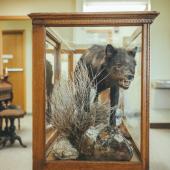
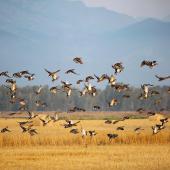
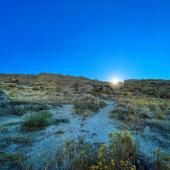



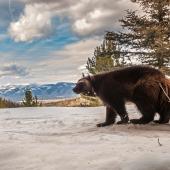

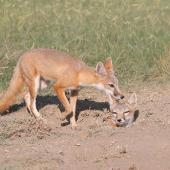


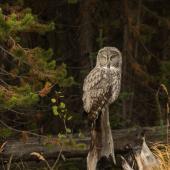
Leave a Comment Here